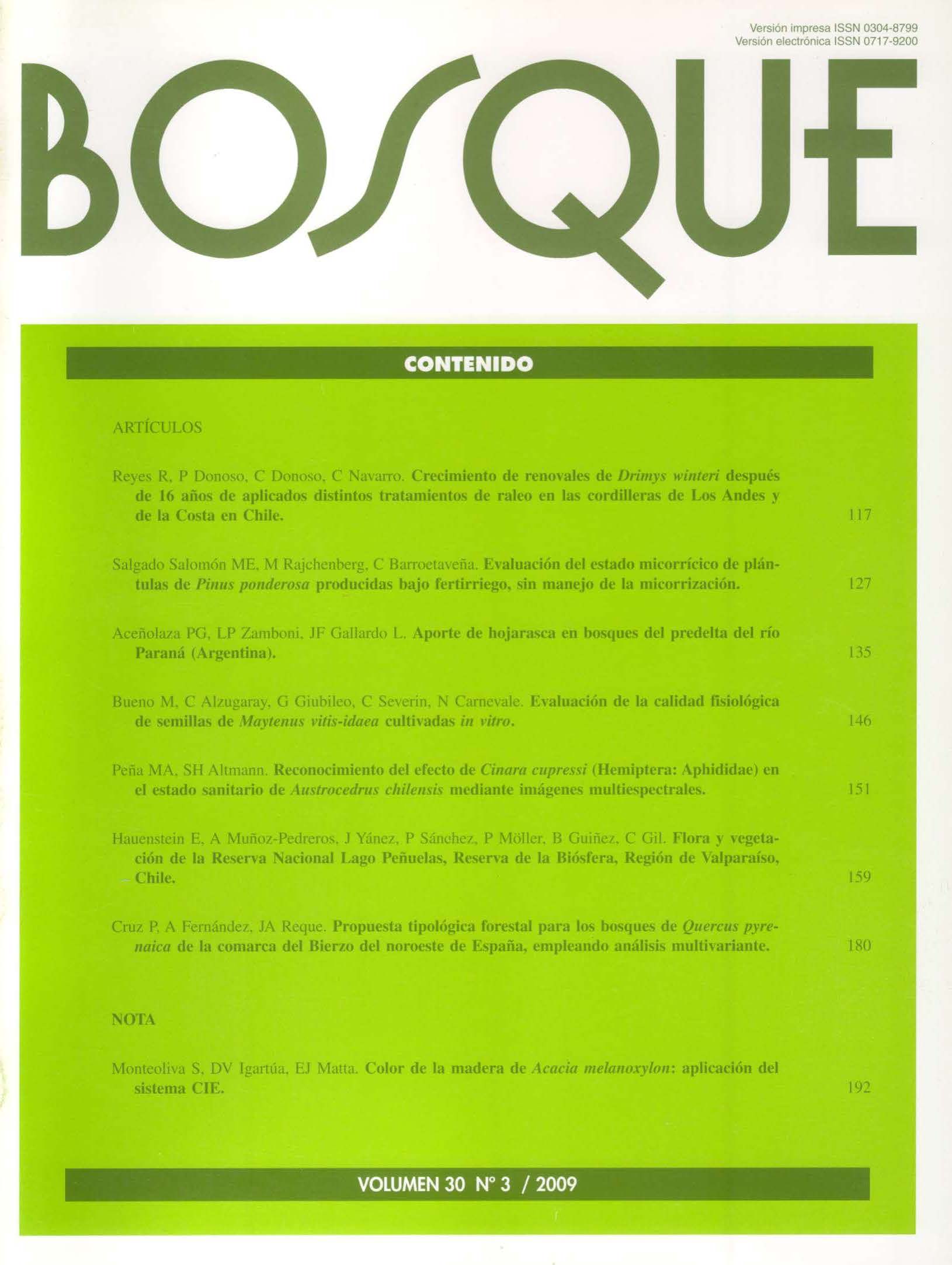Forest typology proposal for the Quercus pyrenaica in the Bierzo region, northwest Spain, using multivariance analysis
Main Article Content
Abstract
The objective of this work is to propose a typology of Quercus pyrenaica in the district of Bierzo, northwest Spain, applying multivariance statistics to the plots of the third national forestry inventory. Six descriptor variables were selected and nine auxiliary calculated: the composition was represented with the cover value, and the age structure with forest calibers in 4 classes. Following this method, the typology was elaborated on the base of 15 variables. The stages of the statistical analyses were: factor analyses and factor determination with maximum explained variance, clusters analyses and dendrogram confection to decide the number of types and discrimination analyses to find the variables with main discriminating power. The variables set was considered appropriate for the confection of typology because of the statistics values achieved. Thus, six types that described adequately the conditions of pastures (grazing grounds) were determined, among them: pure pole stand, degraded pole stand and mixed forests, which have been proposed as frequent for the Community of Castilla y León as well. Furthermore, this methodology allowed establishing a dichotomous key to assign new situations to the proposed types, through the use of clearly differentiable numerical parameters as well as an easily observable on field. Considering the similitude between South American Nothofagus’s forests and those of European fagaceous in which typologies have developed, they make of these a promising tool of forest management for Chile and Argentina.

